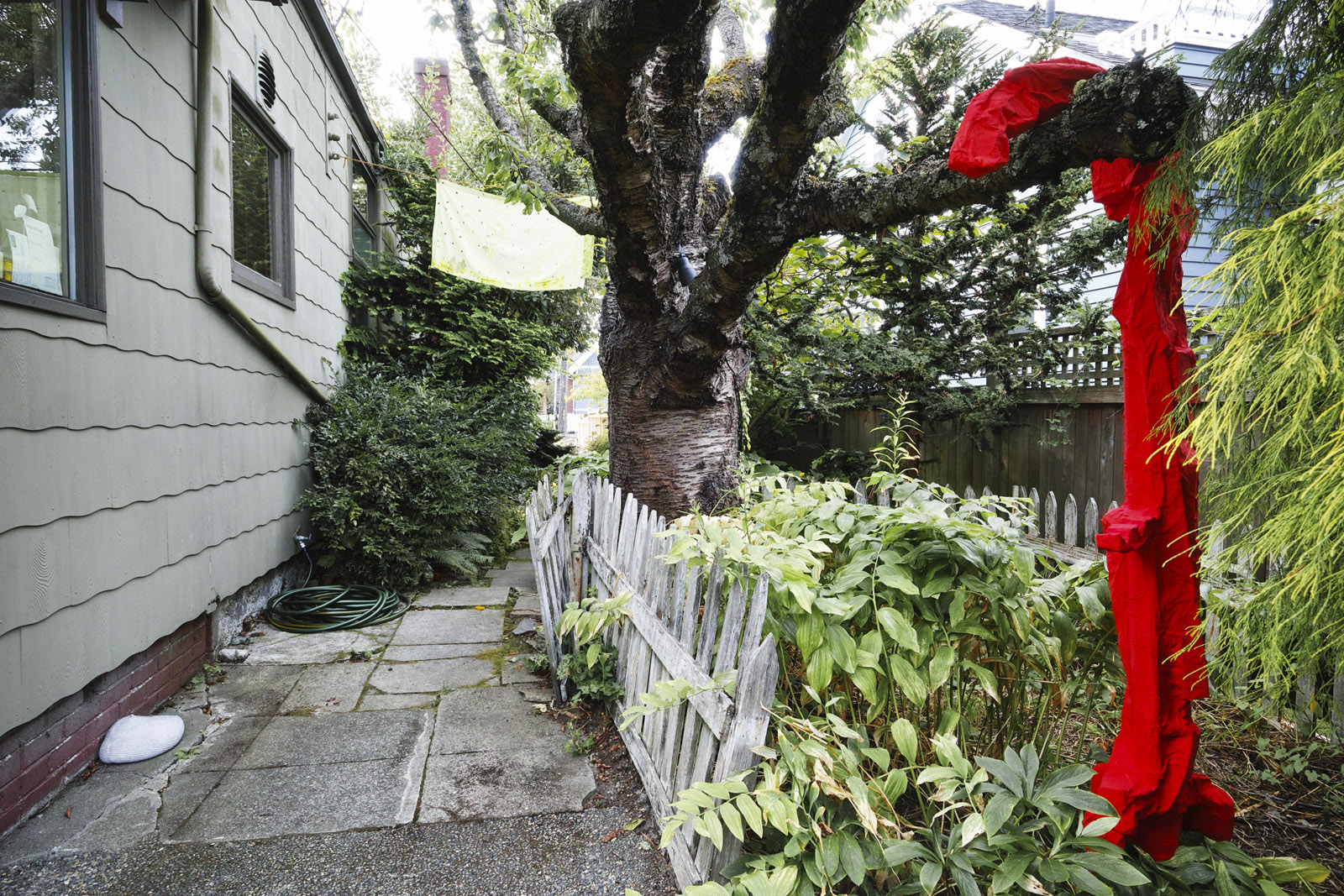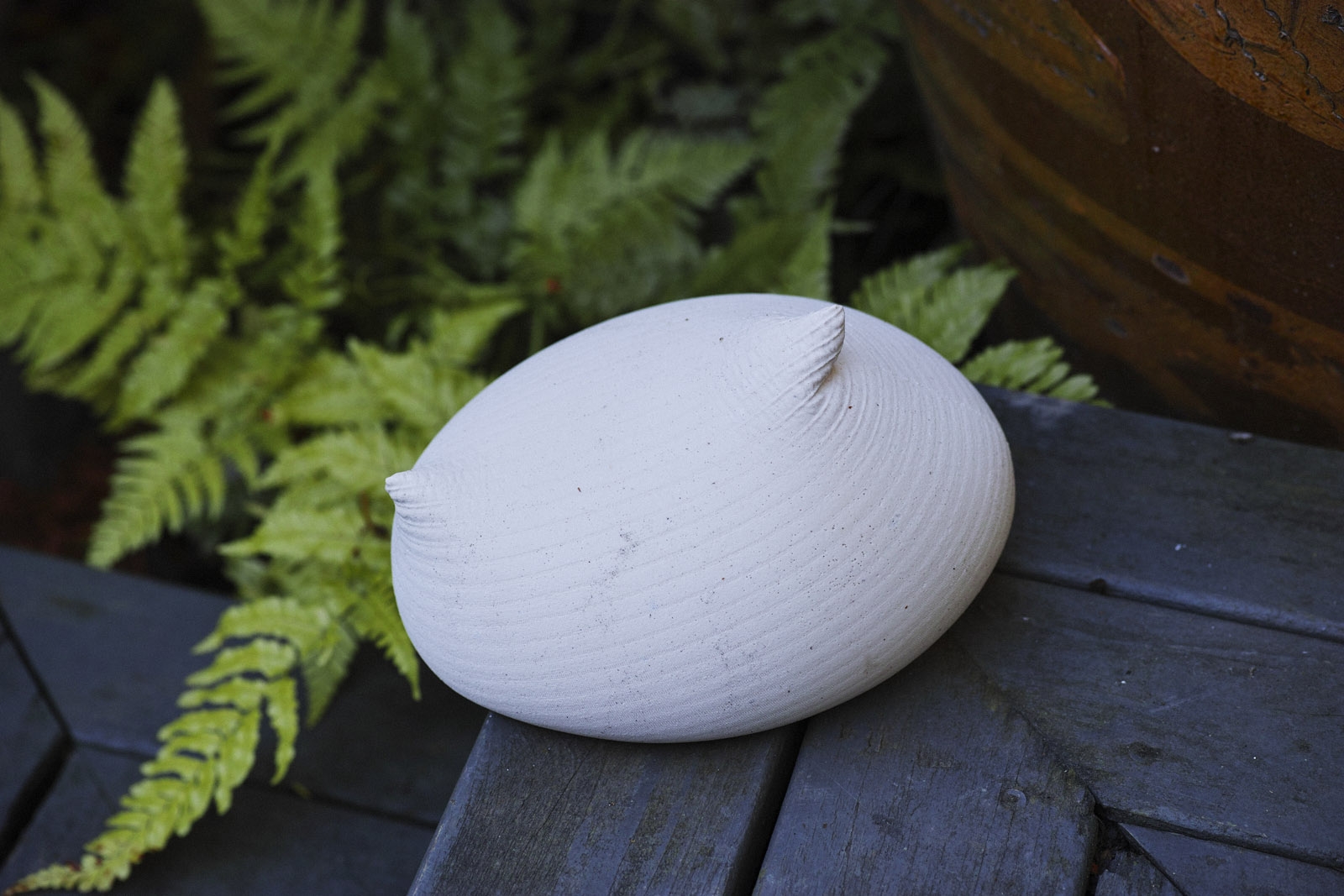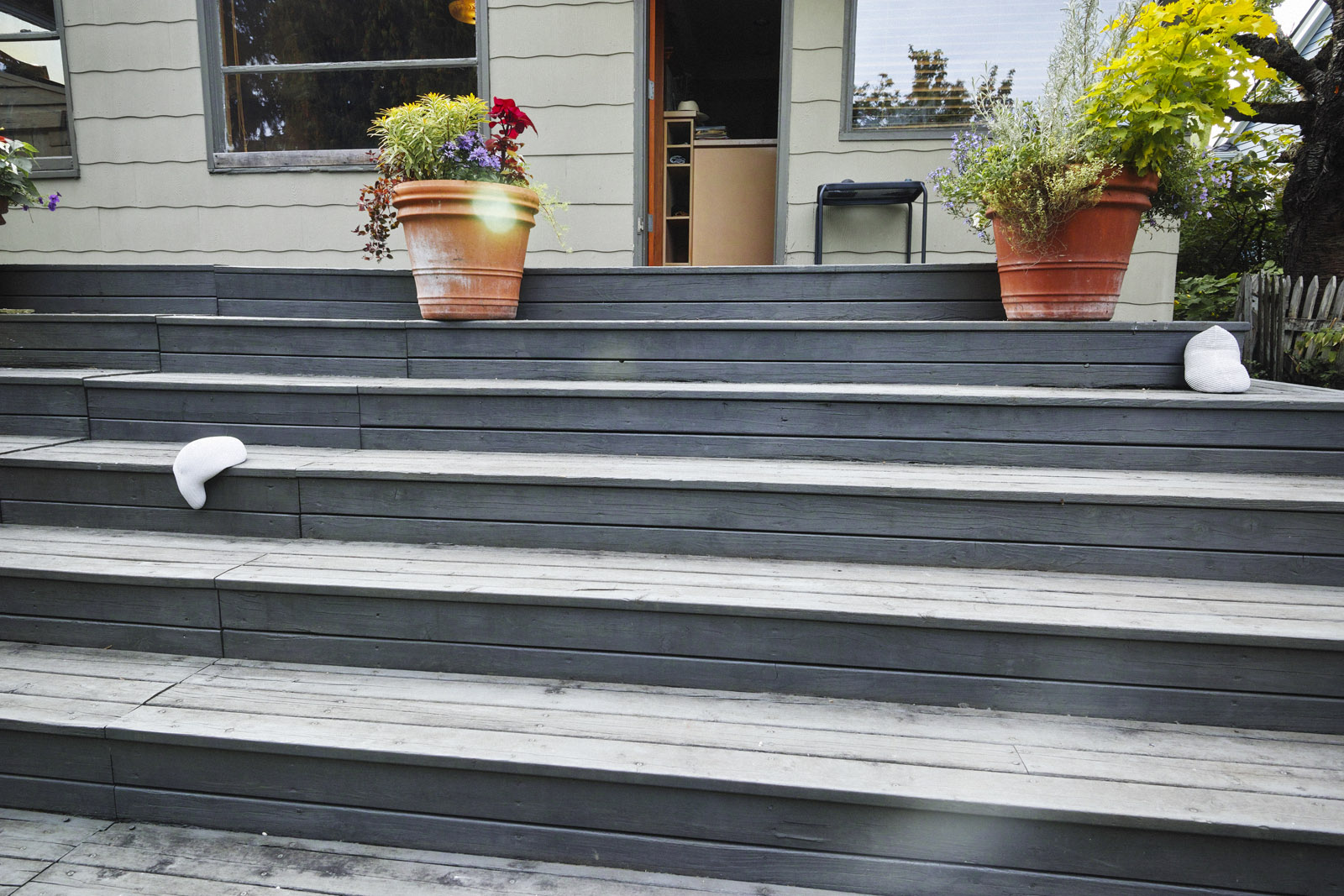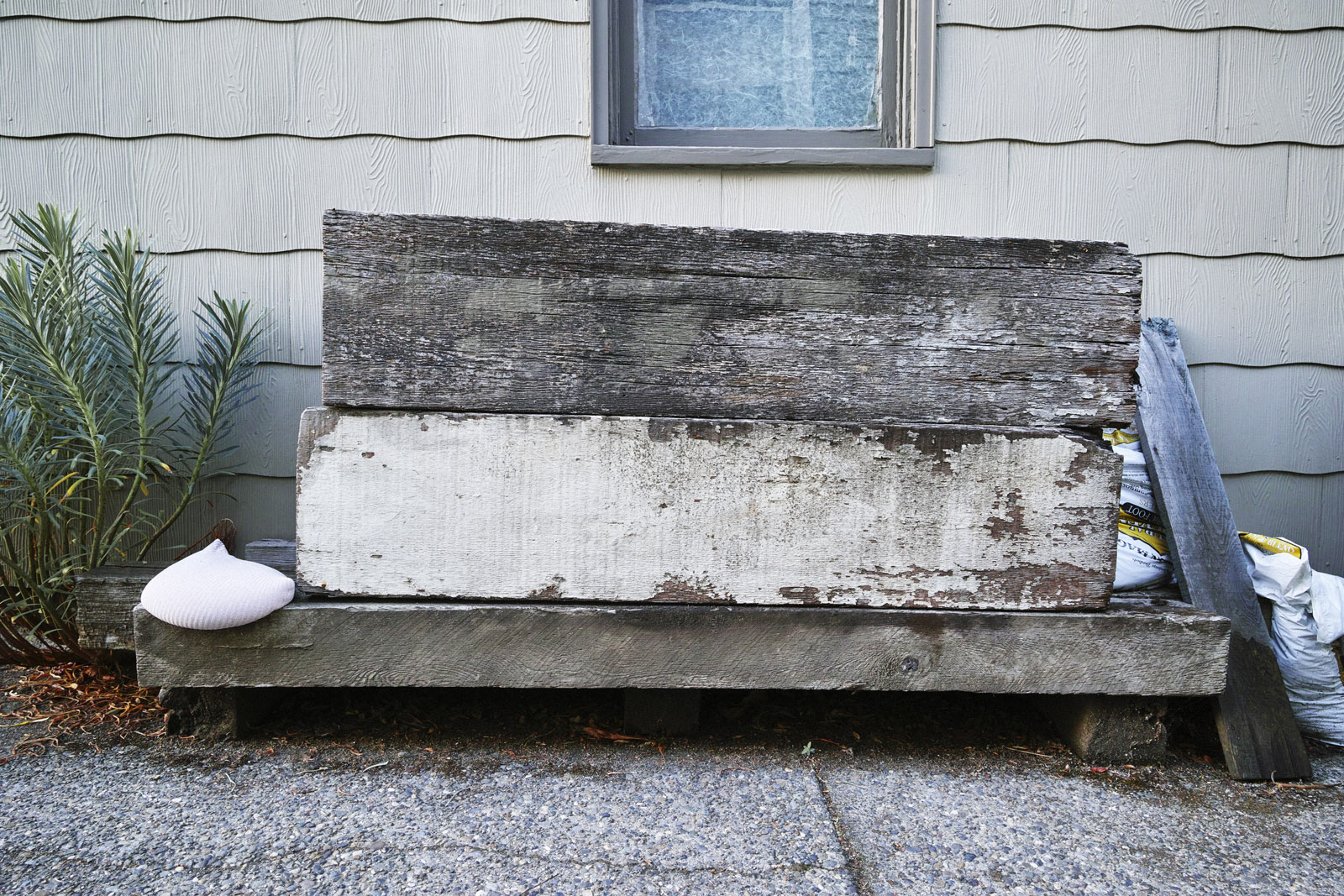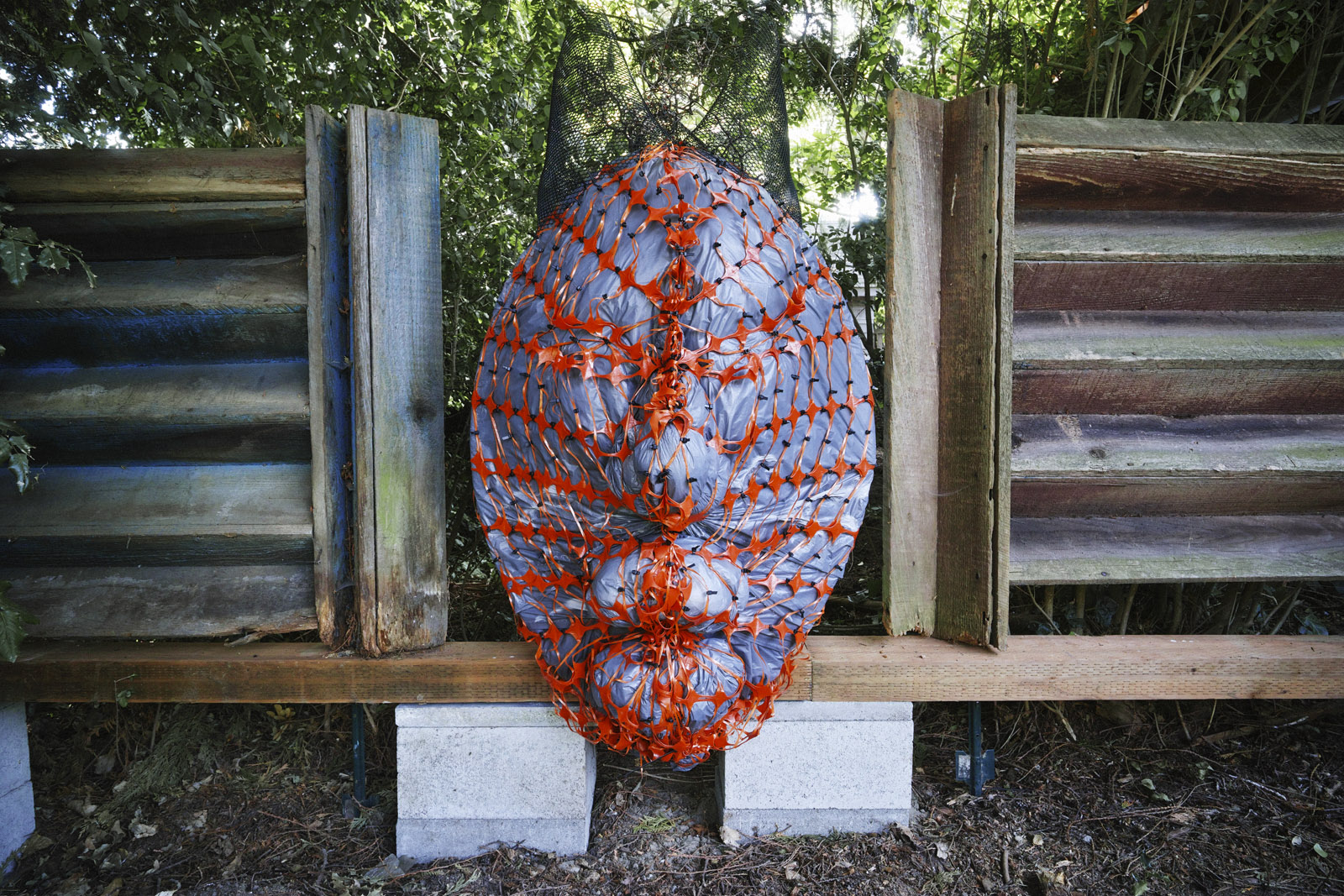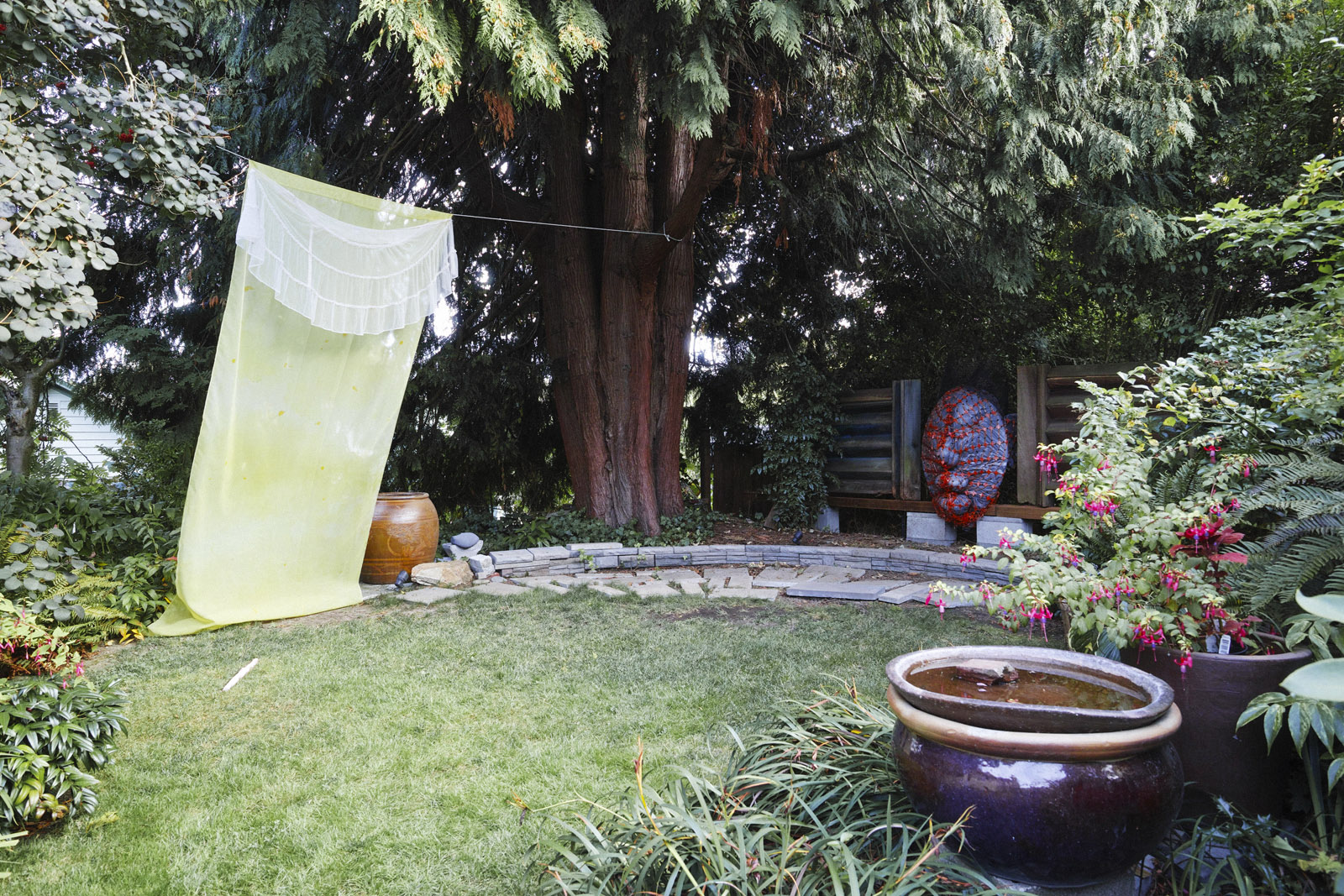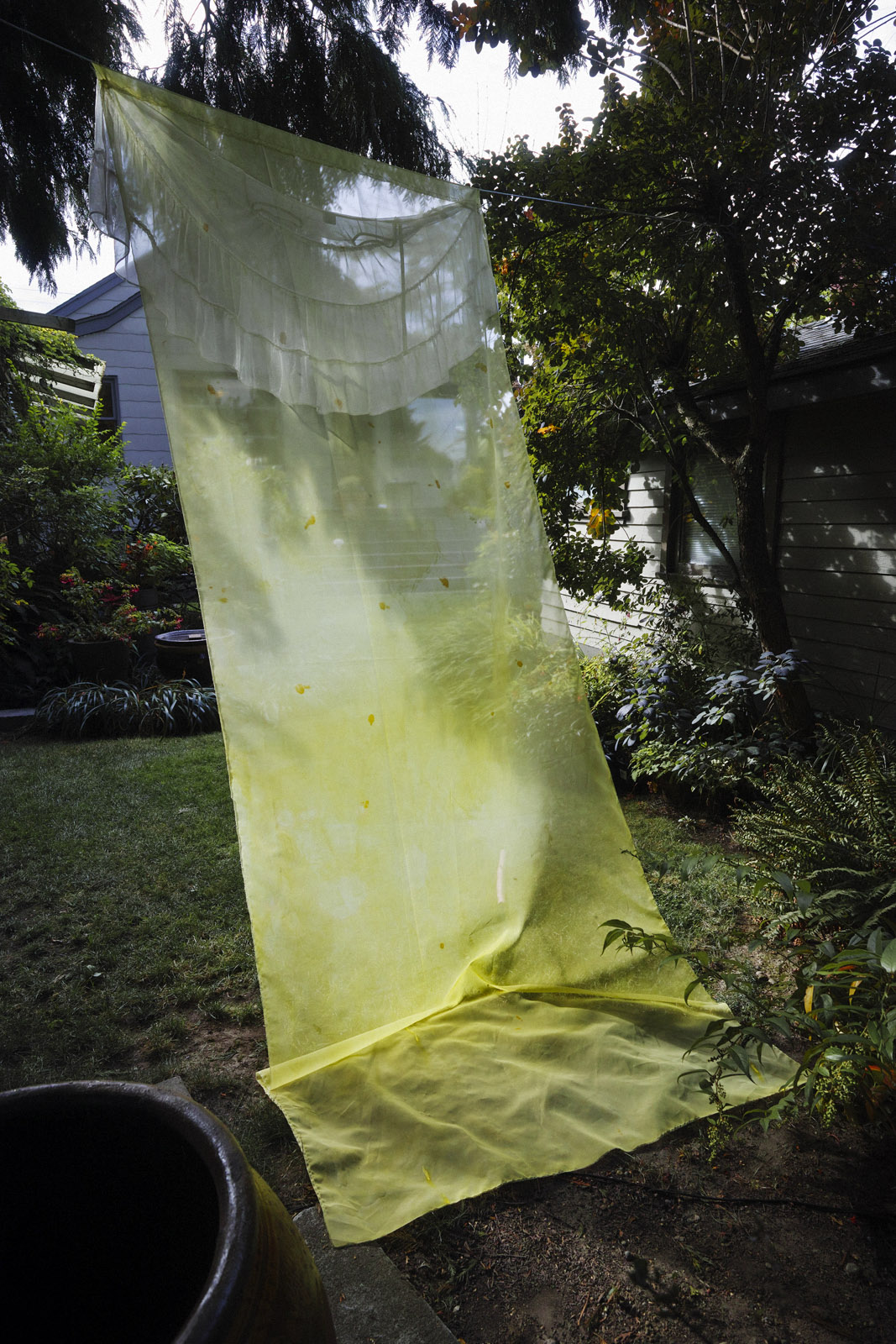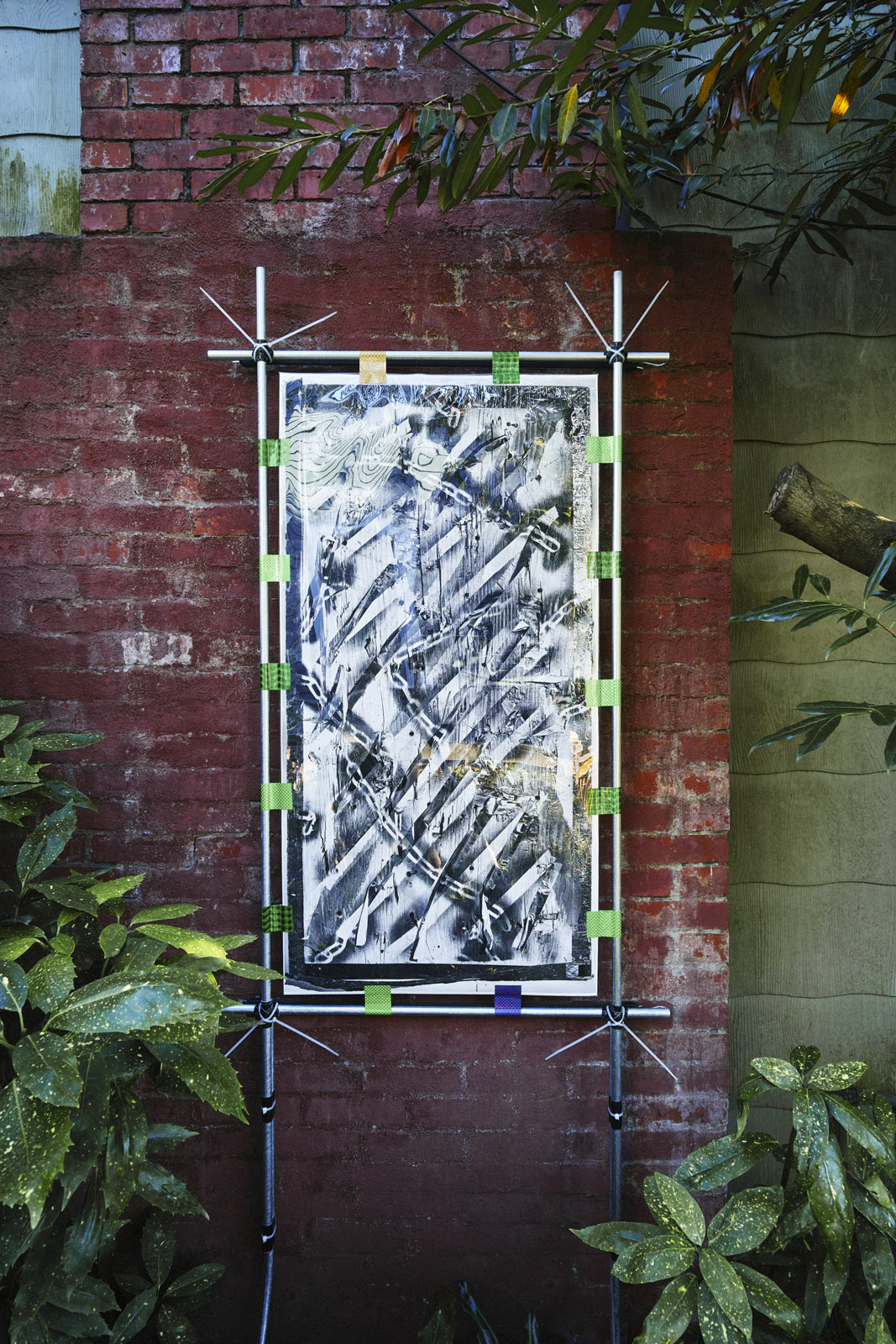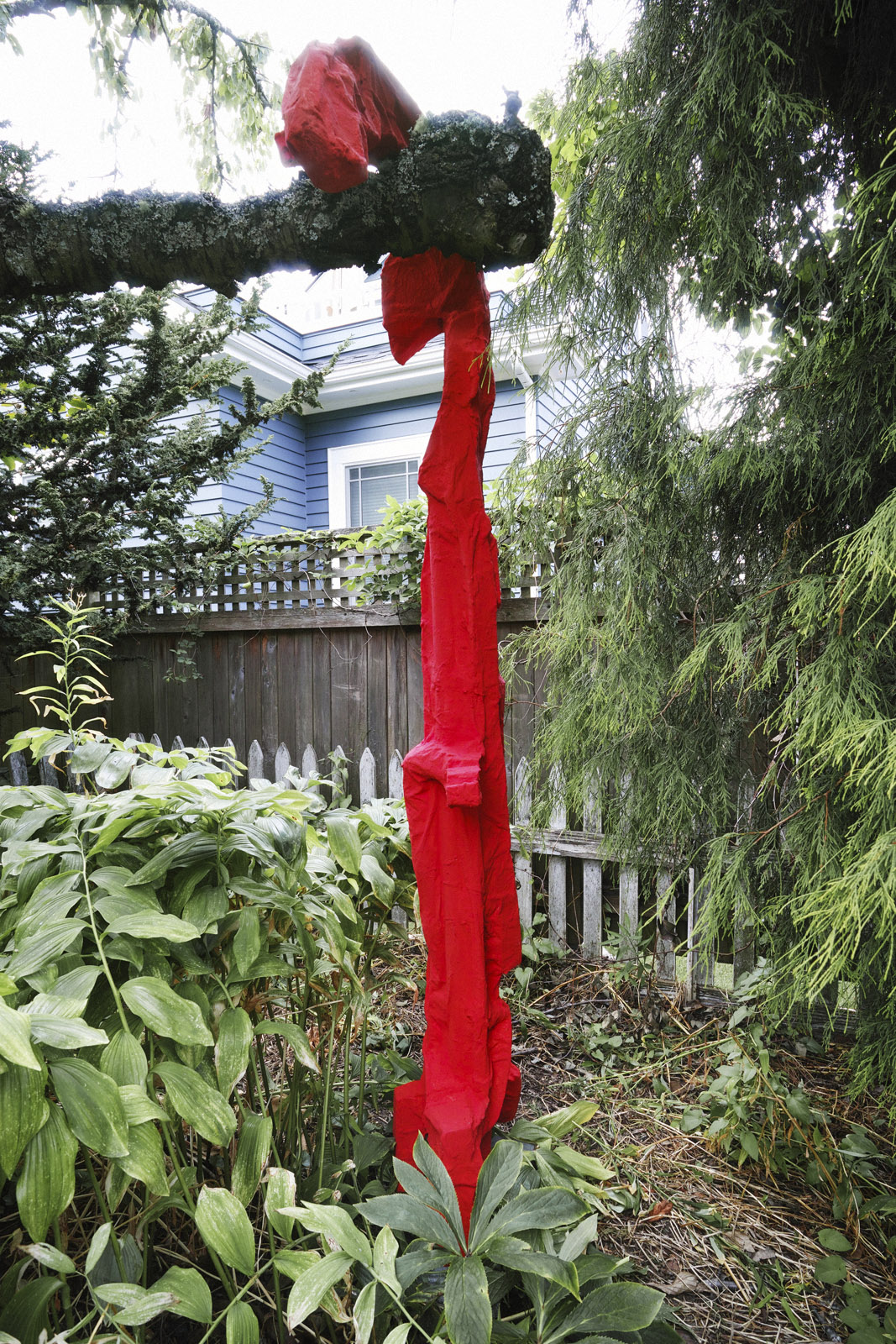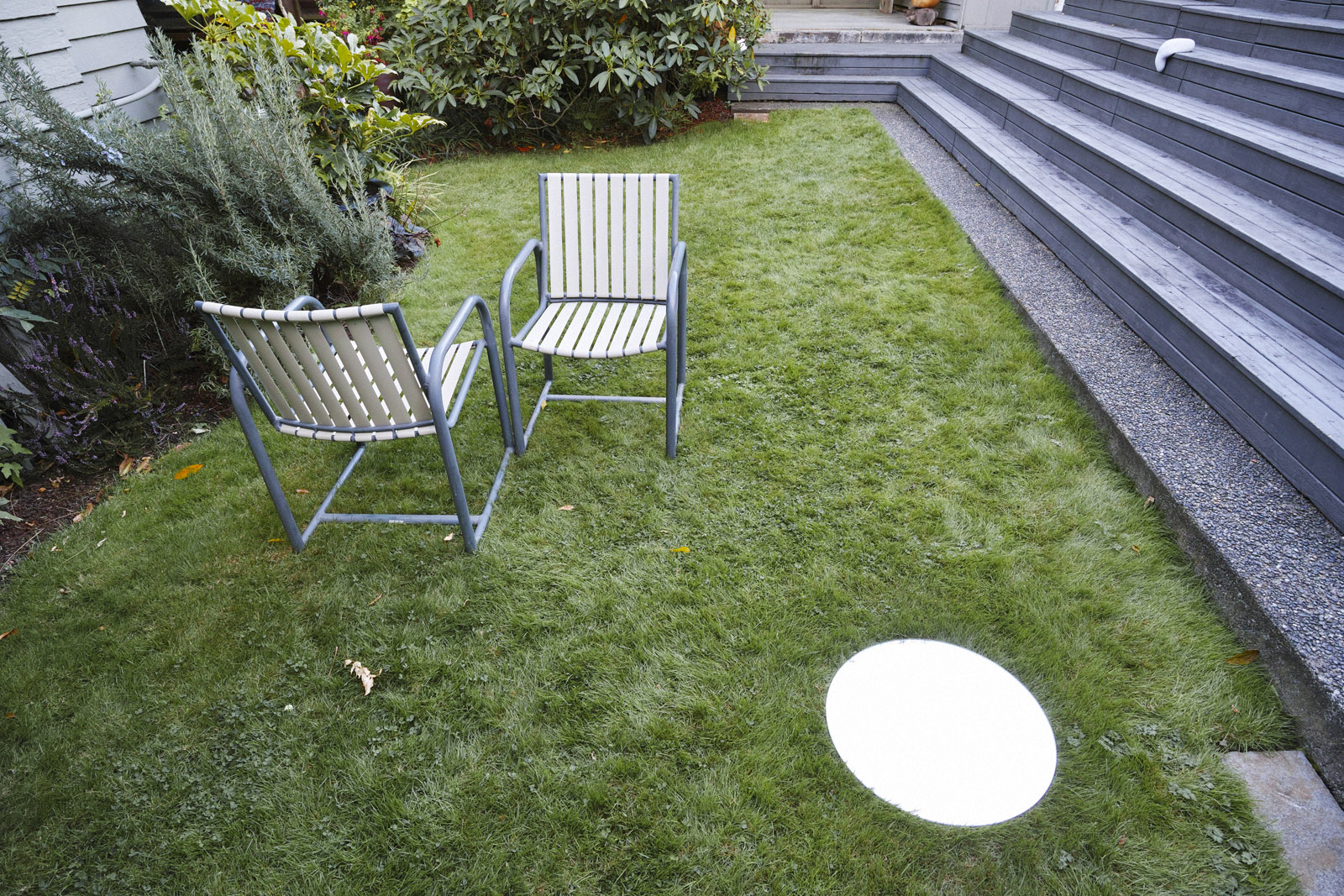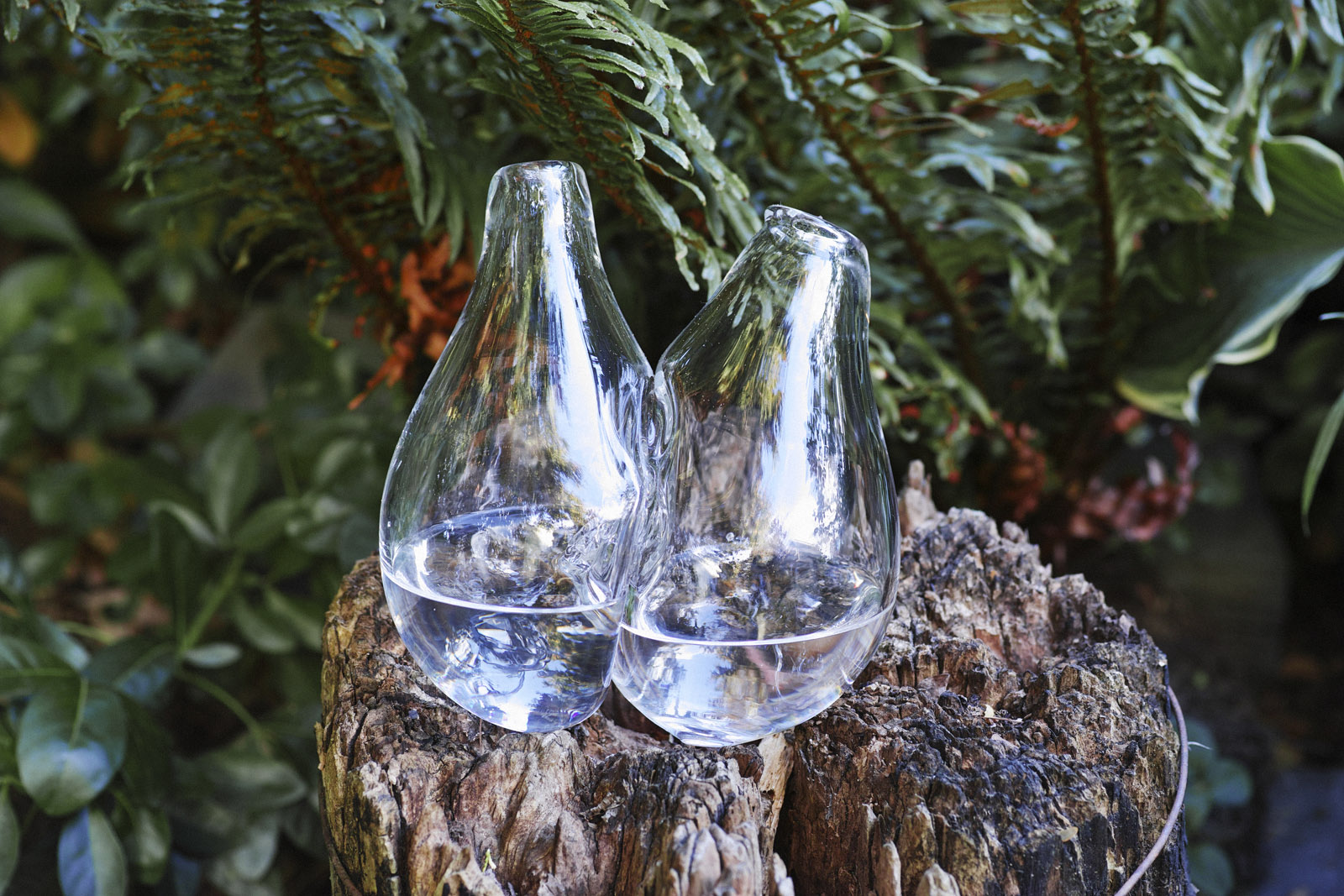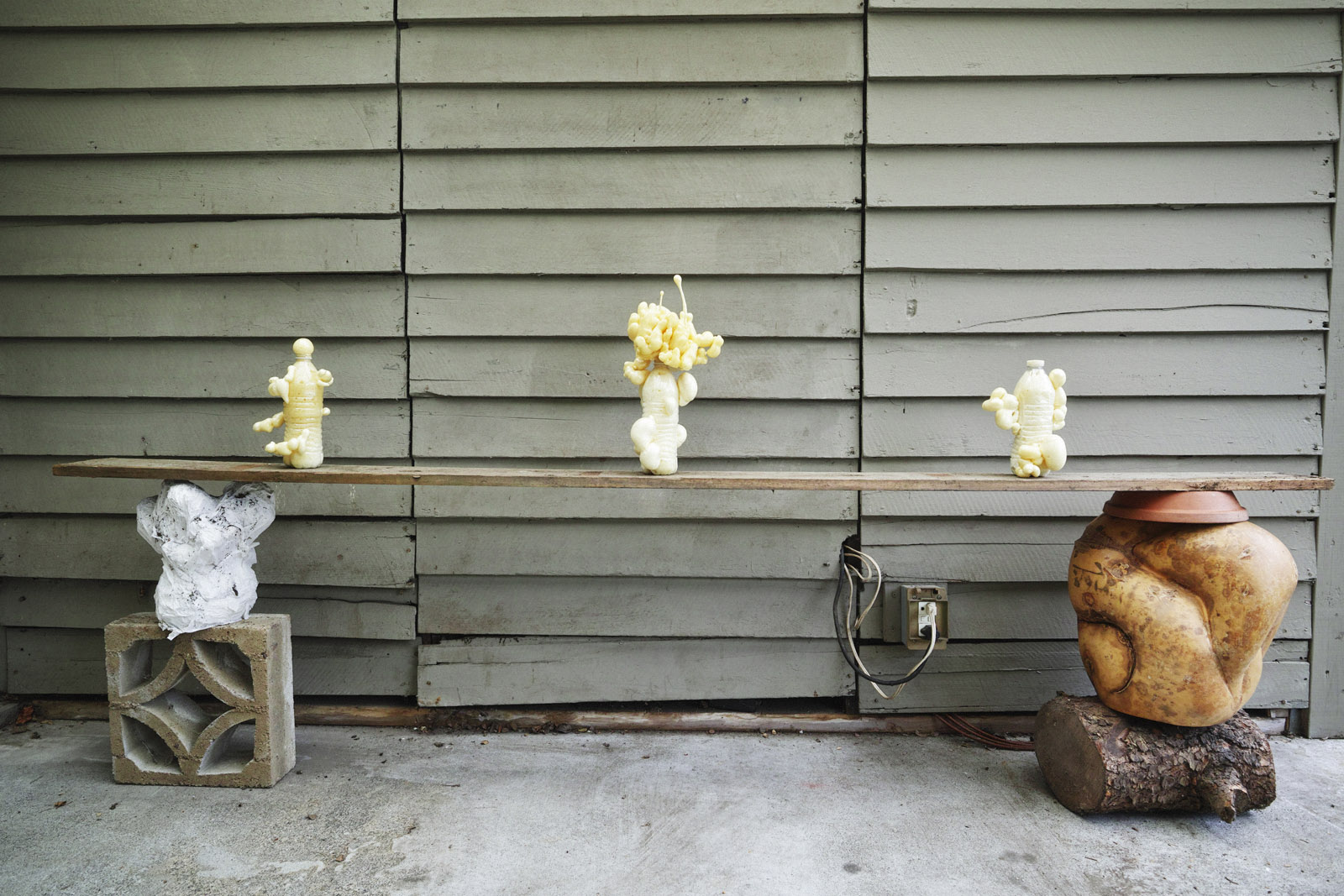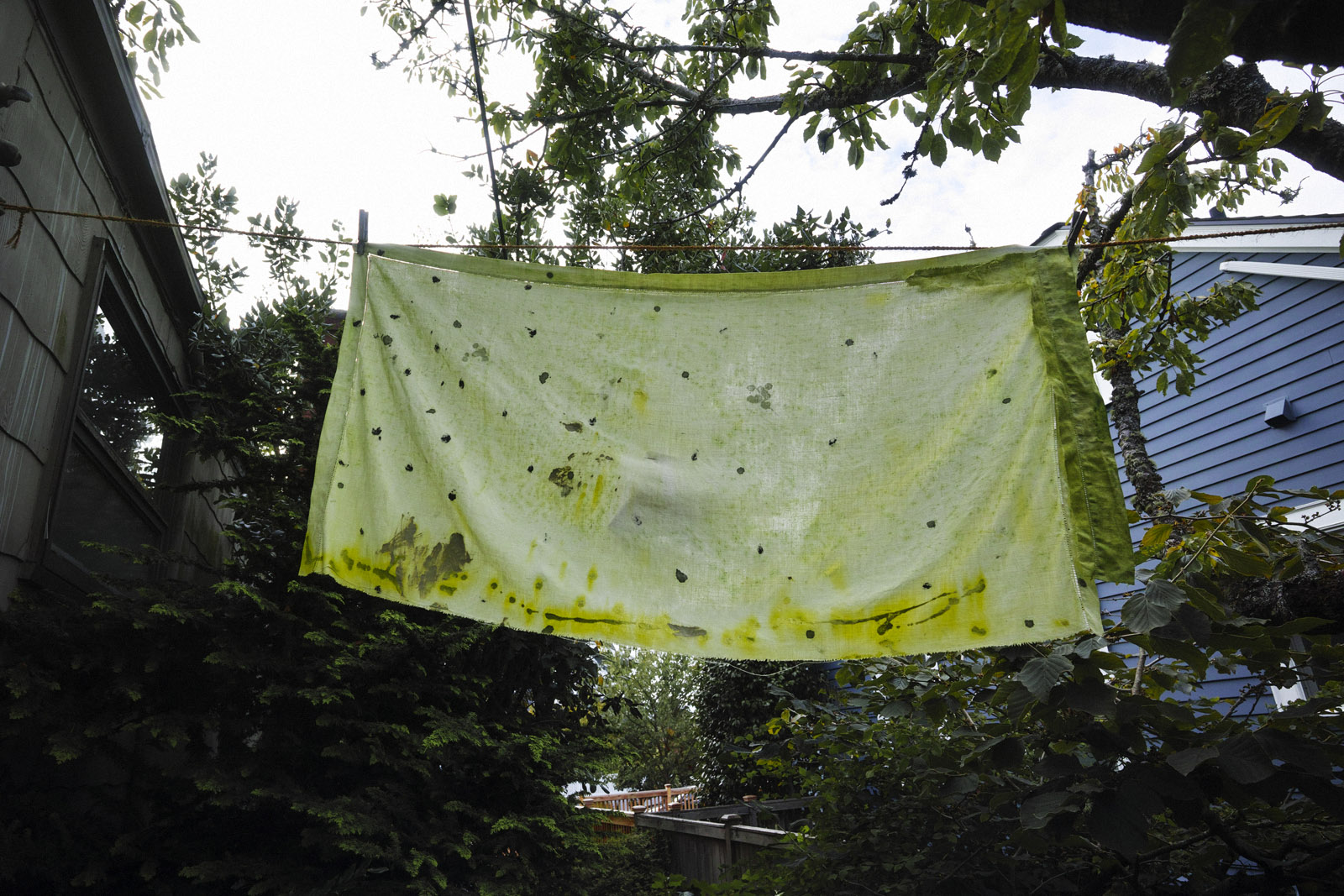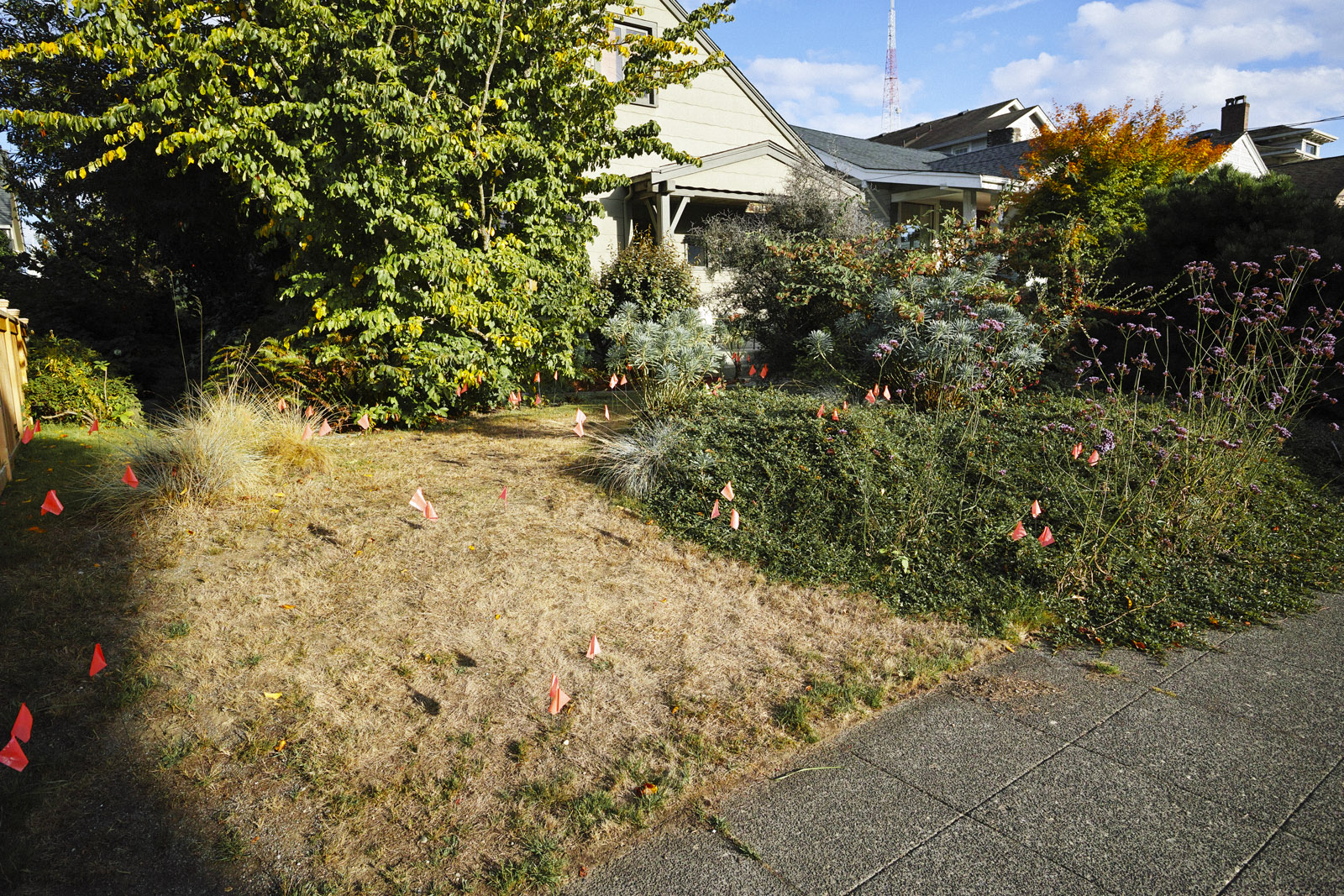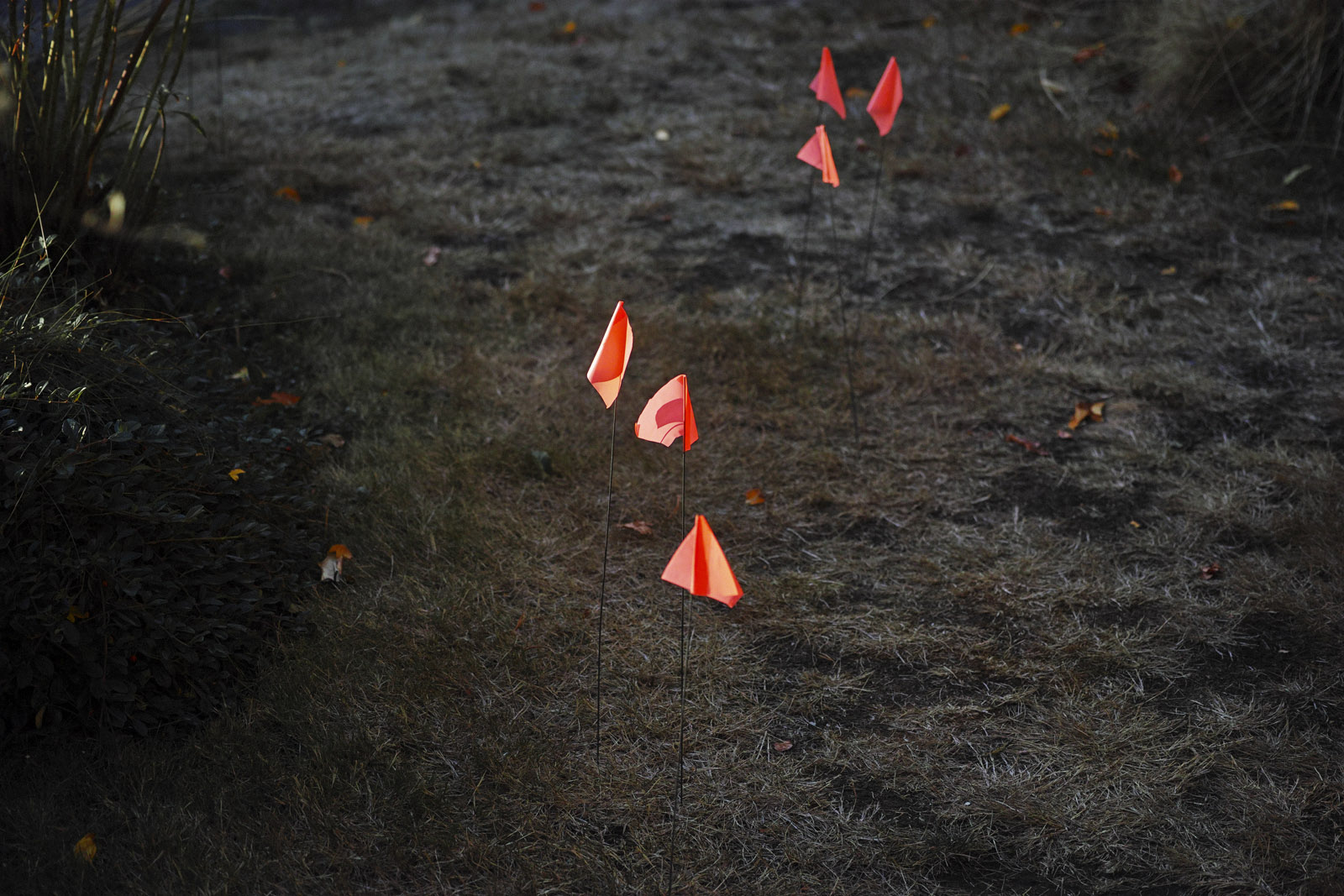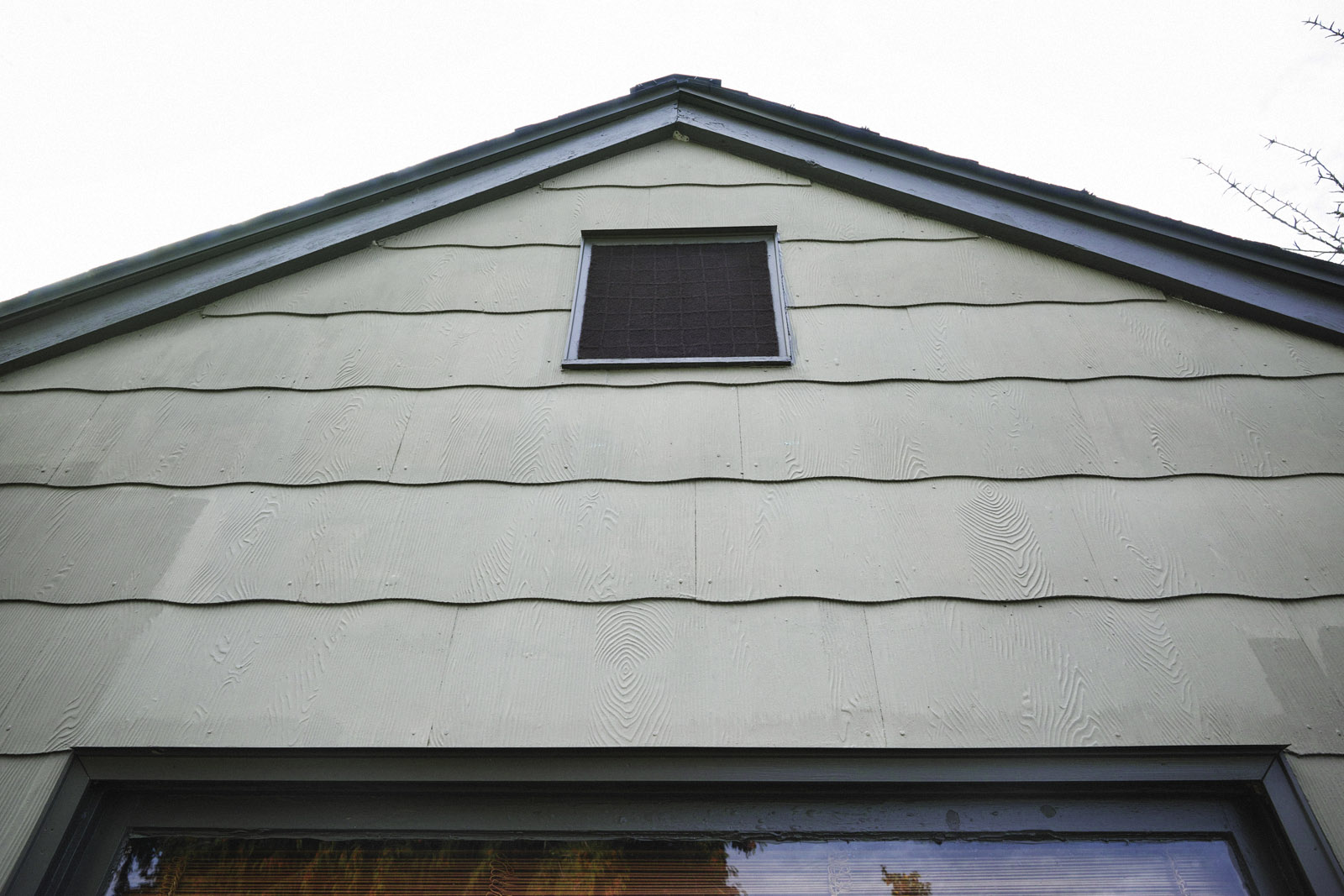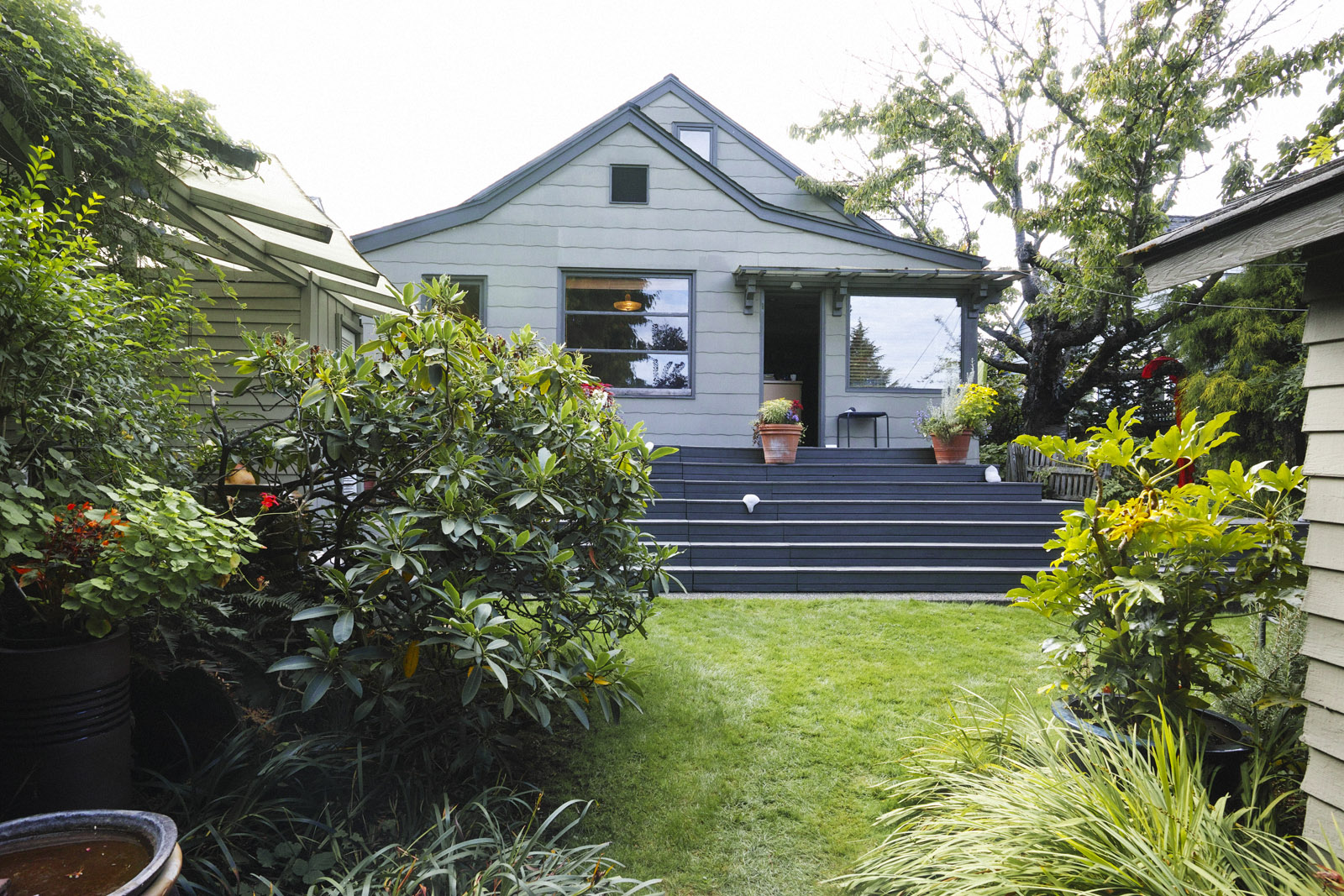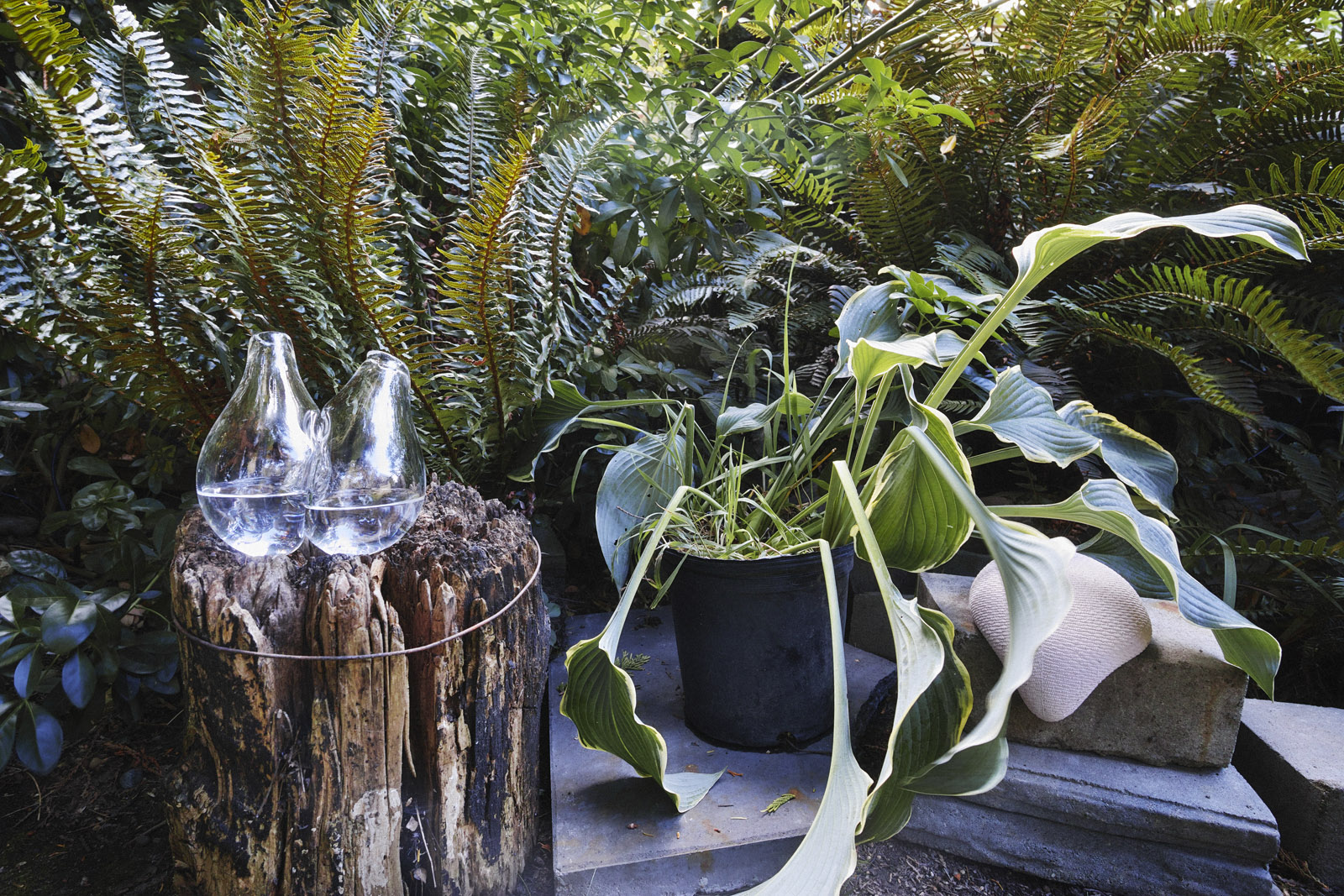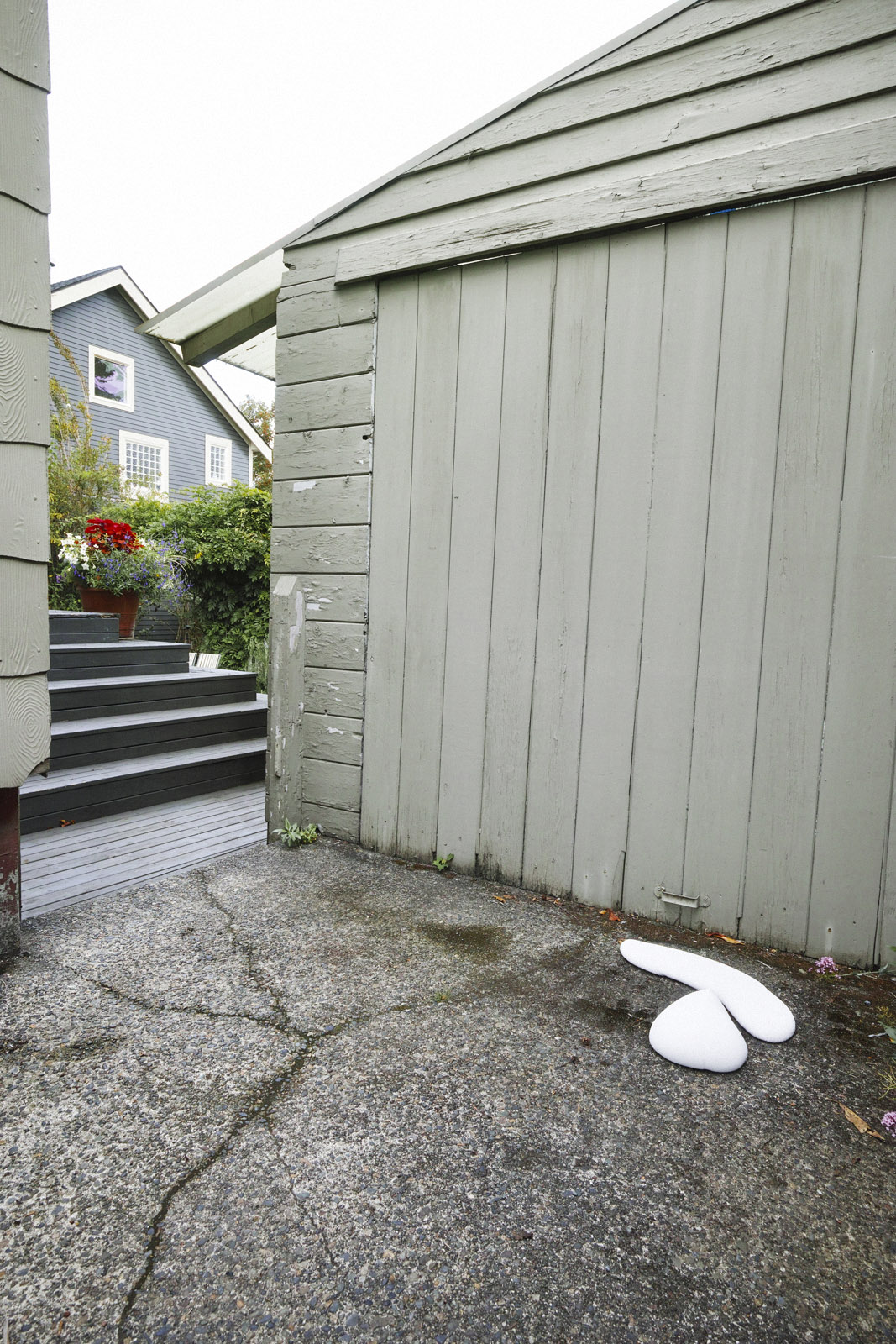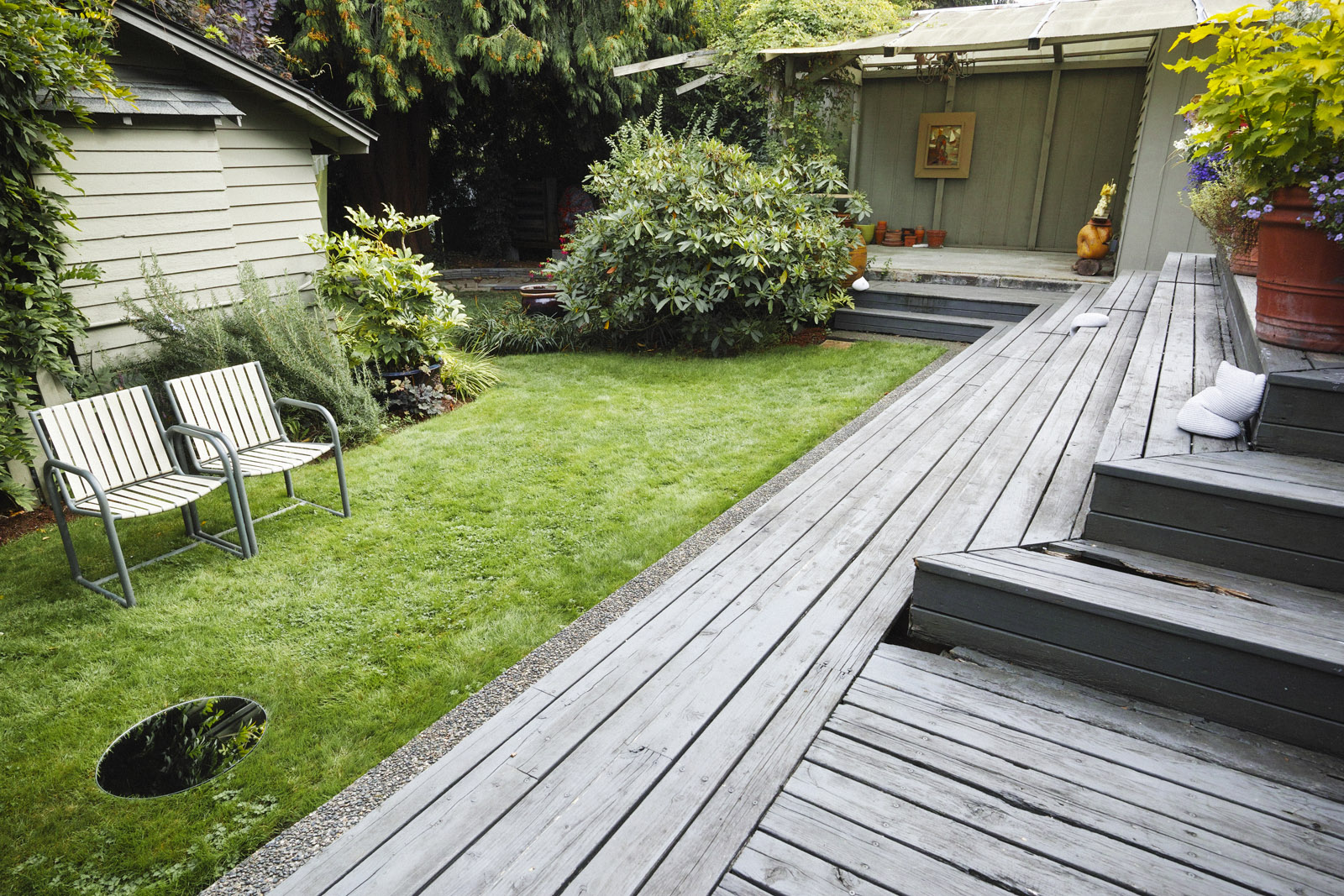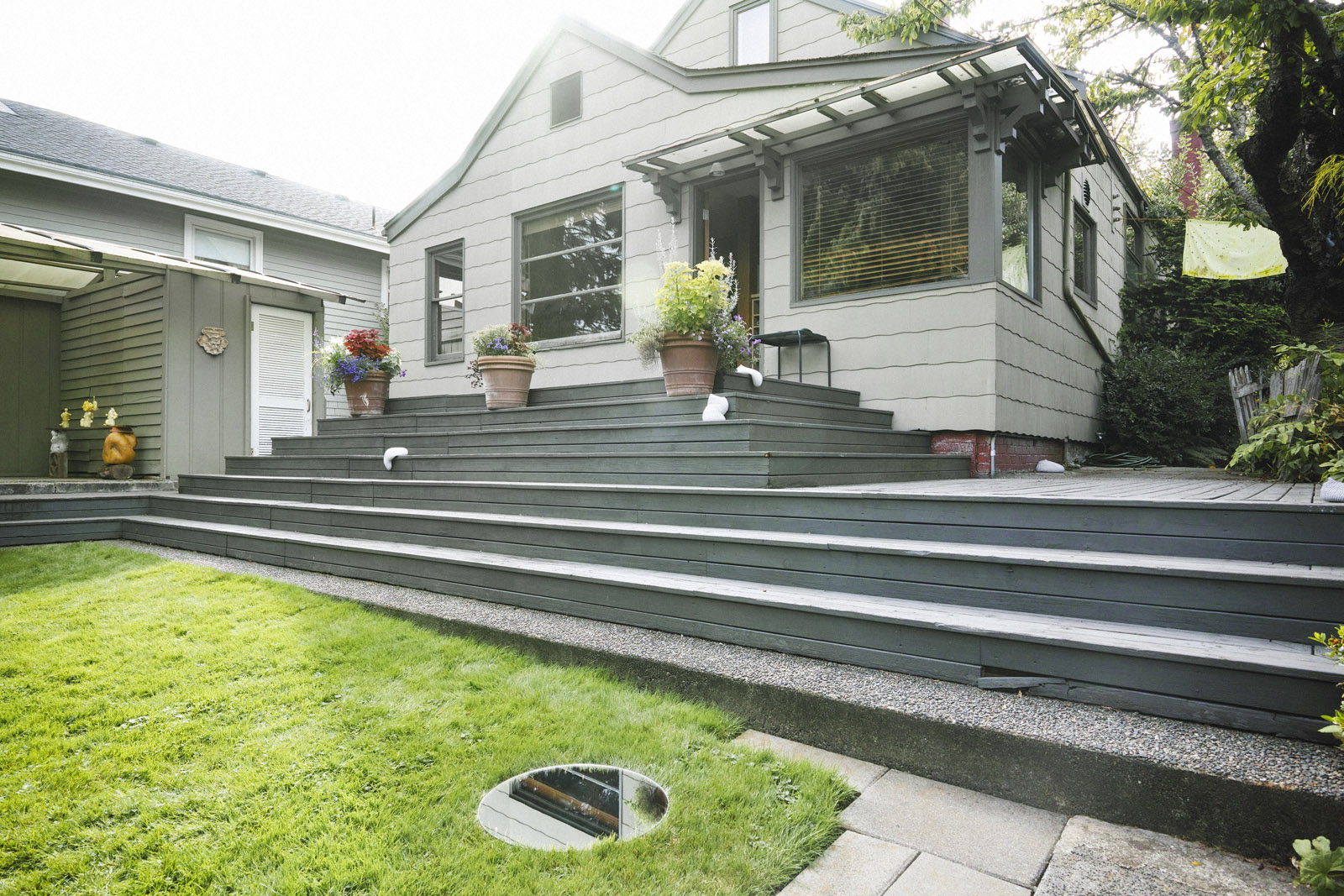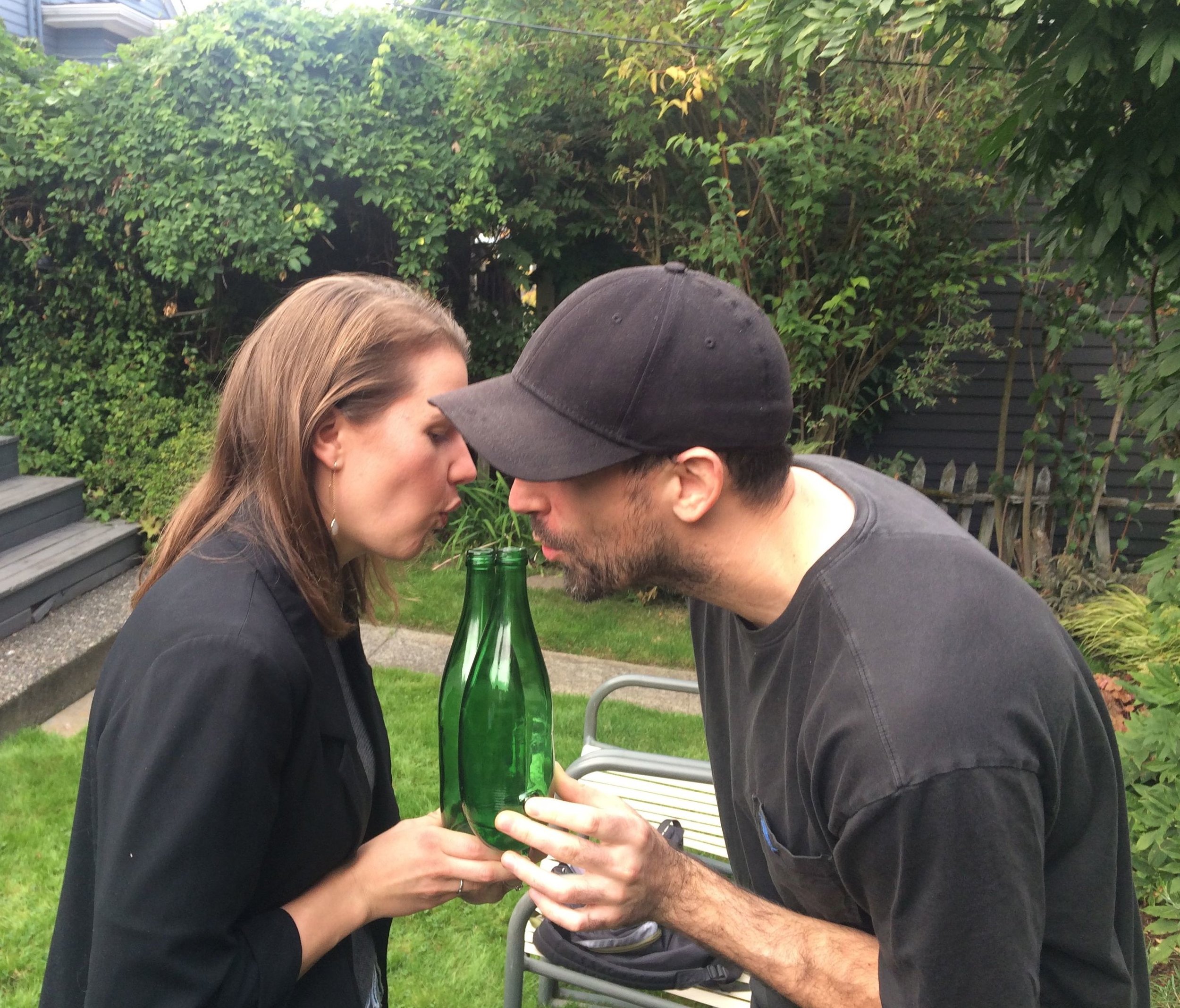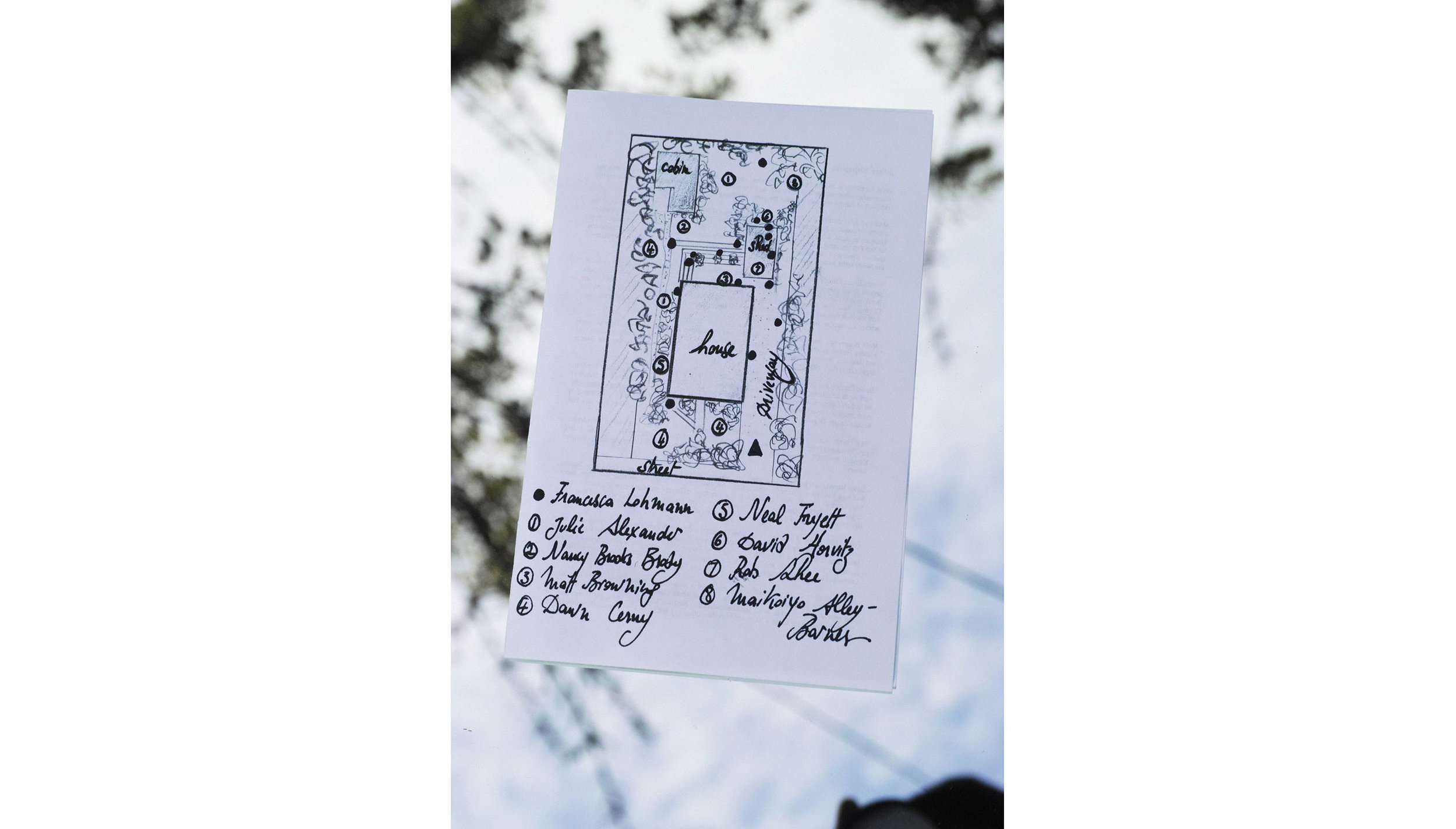PLAIN AIR
Private backyard, Seattle
September 16 – 18, 2016
Works by Julie Alexander, Maikoiyo Alley-Barnes, Nancy Brooks Brody, Matt Browning, Dawn Cerny, Neal Fryett, David Horvitz, Francesca Lohmann, Rob Rhee.Read the Seattle Vanguard review about Plain Air
Exhibition statement
With Plain Air, nine artists are invited to present artworks in the specific setting of a private backyard, responding either to the site or to the exhibition’s title in its widest sense, or both: Plain Air as in plain, straightforward/unadorned/simple, and air as in wind/broadcast/melody/ventilate. This unconventional venue, with its own identity, carefully looked after by its owner, Rick Hundley, is followed by the artists rather than captured. It is not plain nature, but rather a space defined, in the 1950s, as a “suburban backyard”, that is to say, an extension of the house, a space where one can relax, cook, entertain. Even though Plain Air is not conceived as a tentative of reunification with nature, it wishes to induce a certain awareness of it. Beyond activating what is here already, these at times small, at times grander gestures also generate new ideas, and connections appear, among the works themselves and beyond.
In the dark foliage, Julie Alexander’s translucent fabric panel, hanging between two trees, stands and floats simultaneously. The glowing plane reminisces dappled light, which, according to the artist, roots in very ancient times our appreciation for pattern.
Maikoiyo Alley-Barnes embraces the sculptural with a massive head made of found plastic that calls for an awareness of the spiritual sense of the place, may be for a ritual, reminding us that although the power of place is diminished in our society-sometimes it even is lost-, it continues to define culture and identity.
David Horvitz’s and Nancy Brooks Brody’s works are also about connection. Brooks Brody’s duo of garden chairs moves every hour along an invisible grid, invoking a conversation, a square dance. Nearby a circle shaped mirror sits in the grass facing the sky. With this work Brooks Brody continues her investigation of dance and the body.
In continuity with his investigations with music instruments and presence, Horvitz creates a glass bottle with two openings to blown into by two people facing each other to produce two parallel sounds. He is also sending an envelope with California poppy seeds to be planted during the exhibition.
A different meaning of “air” interests Rob Rhee whose mantra, broadcast under the shed, is inspired by the transcription of several responses given to Alan Turing in the 1950s to the question “what would a robot gifted with artificial intelligence not be able to achieve?”. Falling in love or being kind were among the responses, a reminder of our humanness as well as a timely question to revisit.
Francesca Lohman’s cast plaster lumps inhabit the grounds, stairs and nooks, revealing here their animistic tendencies and beautifully blurring the line between the container and the contained. A similar impression of a frozen organism is achieved through the human-sized photograph of Neal Fryett on the side of the house. By the brick wall, it is pulling its strength from the contrast between the elements used for the composition-some of them sourced in the garden-and the slickness of the print enclosed in its sealed celluloid cover.
Dawn Cerny tackles with humor the threats embedded within the domestic: Her installation of tiny bright flags in the front yard are arranged in a pattern mimicking the situation when one person in a trio is left out-be it the father, the mother, the child, the sibling, the friend. Her other intervention, a colored form leaning on a cherry tree branch-a hybrid of branch, crutch and appendix-, is at times intimidating, at times laughable, at times elegant.
Finally, Matt Browning’s dark diamond lattice felted cloth made out of wool is applied on an obstructed window. This labor-intensive, hard-to-decipher an-iconic square suggests, nay creates a void. Like several other works in the exhibition, but perhaps more so, it quietly mediates between us and our environment.
Its unique fiber’s entanglement echoes the organic connections-of people and ideas-engendered by Plain Air. Each work here embraces the physical and spiritual dimension of the place. Plain Air is meant to be a moment of convergence, a time when our senses are solicited, a time when the consciousness of the place is temporarily activated, bringing different readings to it as well as participating in its history.
Artists’ biographies
Julie Alexander is an artist and curator working in Seattle. She's a member of SOIL Gallery in Seattle and has curated exhibitions in Seattle as well. Julie has exhibited broadly in Seattle, NY, and Miami and is the recipient of numerous grants including the Jentel Residency and the Artist Trust Fellowship.
Maikoiyo Alley-Barnes is a Seattle-based artist, writer, and designer. His work has been shown at the Whitney Museum of American Art, MOCA (Los Angeles), the Frye Art Museum, and most recently the Aichi Triennale in Japan. A founding member of the collective, Black Constellation, he has directed music videos for Sub Pop recording artists Shabazz Palaces, THEESatisfaction, and Porter Ray. He was co-founder and creative director of pun(c)tuation, a prototypical mixed-use space in Seattle. In 2014, Alley-Barnes received the Neddy Artist Award in Open Medium.
Nancy Brooks Brody was born in New York, where she lives and works. She has exhibited solo shows at Andrew Kreps gallery, New York and Virgil de Voldere Gallery, New York. Selected group exhibitions include Brooklyn Museum, New York; La Mama La Galleria, New York; FRAC Haute-Normandie, France; White Columns, New York; Slingshot Project, Brussels; Artists Space, New York; Vera List Center for Arts and Politics, New York and The Drawing Center, New York. Nancy Brooks Brody has been a member of the queer women’s collective, fierce pussy, since 1991.
David Horvitz is a half-Japanese artist who was born in Los Angeles, and currently works in Los Angeles and New York. He has recently exhibited in MoMA, New York; the New Museum, New York; Chert, Berlin; Yvon Lambert Librarie, Paris; and Blum & Poe, Los Angeles. Recent publications include Mood Disorder, co-published by New Documents, Motto, and Chert; Stolen Spoons, published by Pork Salad Press; Sad, Depressed, People, published by New Documents; and Watercolors, self published.
Rob Rhee is a Seattle based artist, writer, and a professor at Cornish College of the Arts. He has exhibited both nationally and internationally, including White Columns in NY, the Hunterdon Art Museum, the Ilmin Museum of Art in Seoul, the Changwon 2010 Biennale, and the Ferdinand Van Dieten Gallery in the Netherlands. He holds a BA in Art from Yale University and an MFA in Sculpture/New Genres from Columbia University.
Francesca Lohmann was born 1986 in San Francisco and currently makes her home in Seattle. She holds a BFA in Printmaking from the Rhode Island School of Design, graduated with an MFA from Cornell University in 2014, and is a current participant in Prequel PDX. Her practice involves collaboration between substance, gravity, time, and circumstance. Lohmann’s work has been exhibited in numerous solo and group exhibitions in the Northwest and beyond, including at Veronica, the Jacob Lawrence Gallery, the Hedreen Gallery, Two Shelves, and Vignettes.
Neal Fryett received an MFA from the University of Washington in 2011 and was a fellow in the Art and Law Residency Program at Fordham Law School in 2014. Exhibitions or performances include: Glass Box, Klowden Mann, OK Hotel, Frye Art Museum, Worksound International, Greg Kucera and Jacob Lawrence Gallery.
Dawn Cerny is a artist and educator based in in Seattle. Cerny grew up in Solvang California and has been working in Seattle for the last 17 years. She received her MFA in Sculpture at the Milton Avery School of Art at Bard College in Annandale on Hudson and works across the disciples including drawing, photography, publication and time based mediums. She is a current nominee for the 2016 Neddy “open medium” award. Cerny has exhibited at the Henry Art Gallery, Western Bridge, Greg Kucera Gallery, Or gallery in Vancouver, British Columbia; Night Gallery, Los Angeles; Derek Eller, New York.
Matt Browning's work concerns time, latency, and the selective and hierarchical valuations of human activity. He has studied and exhibited in the US and Canada, is a member of the curatorial collective Tarl, and teaches material studies and art history to non-traditional adult learners through the Seattle organization Path with Art.
